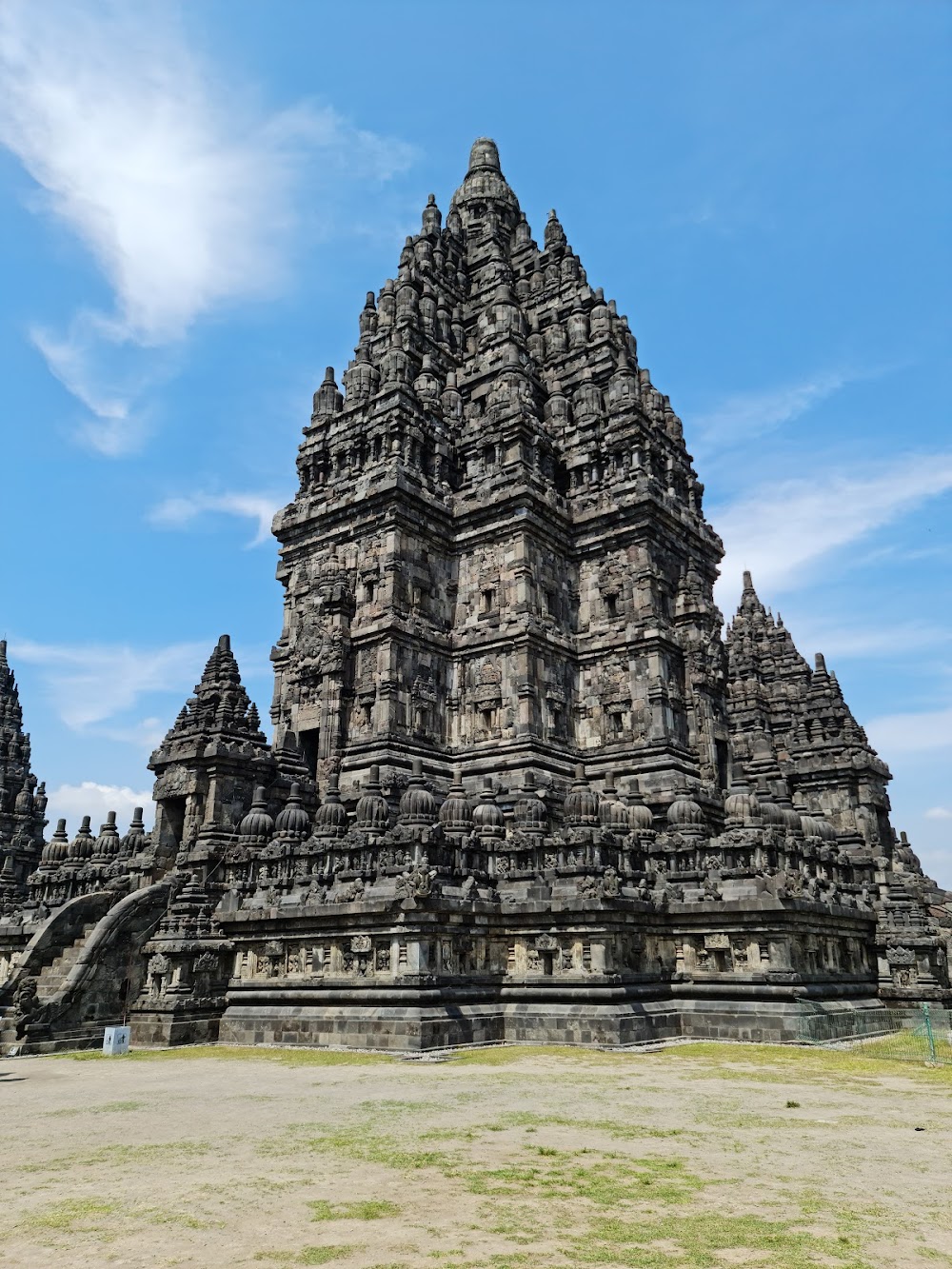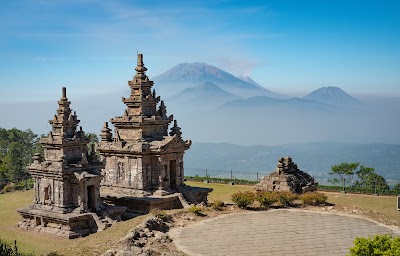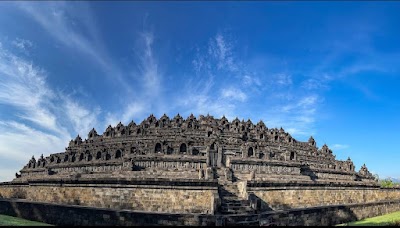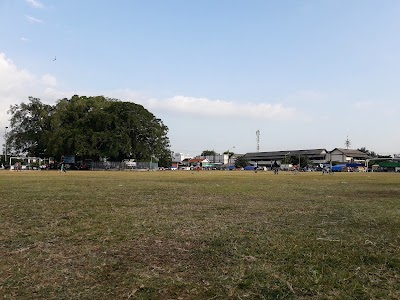Prambanan Temple (Candi Prambanan)
Related Places
Overview
Prambanan Temple: A Majestic Hindu Heritage
Prambanan Temple, an awe-inspiring Hindu temple complex, proudly graces the landscape of Jawa Tengah, or Central Java, Indonesia. Renowned for its strikingly tall and pointed architecture, this historical site embodies the grandeur of the Sanjaya Dynasty from the 9th century. Nestled within lush greenery, Prambanan stands as a testament to Indonesia’s rich cultural and religious heritage.
Construction and Design
The construction of Prambanan Temple commenced around 850 AD during the reign of Rakai Pikatan from the Hindu Sanjaya Dynasty. This magnificent complex was built in honor of the Trimurti, the three principal Hindu gods: Brahma the Creator, Vishnu the Preserver, and Shiva the Destroyer. The main temple, dedicated to Shiva, soars to an impressive height of 47 meters, creating a breathtaking skyline.
The architectural layout is meticulously designed in a rectangular format, featuring a central courtyard elevated above the surrounding area. In this main courtyard, you’ll discover three primary temples dedicated to Shiva, Brahma, and Vishnu. Each main temple is accompanied by smaller shrines for their respective animal vehicles: Nandi the bull for Shiva, Hamsa the swan for Brahma, and Garuda the eagle for Vishnu.
Intricate Carvings and Craftsmanship
One of the most captivating features of Prambanan is its intricate bas-relief carvings that adorn the temples. These stunning carvings depict various scenes from the ancient Indian epic, the Ramayana, showcasing exceptional craftsmanship. The detailed stonework provides a glimpse into the rich mythologies and cultural narratives of the time, making each temple a storybook carved in stone.
The construction techniques employed were remarkably advanced for their era. Builders utilized andesite stone sourced from a nearby river, meticulously chiseling each piece to fit perfectly without the use of mortar. This precision ensured the structural integrity of the temples, allowing them to withstand centuries of natural wear and even earthquakes.
Rediscovery and Restoration
After the decline of the Sanjaya Dynasty, the temple complex fell into disuse and was eventually abandoned. Over time, the grand structures became buried beneath volcanic ash and dense jungle foliage. It wasn't until the early 20th century, under Dutch colonial rule, that significant restoration efforts commenced. The site was painstakingly excavated, with many structures rebuilt and stabilized, though some minor parts of the temple remain lost to history.
A UNESCO World Heritage Site
Today, Prambanan Temple is recognized as a UNESCO World Heritage Site, attracting visitors from around the globe. It serves not only as a site of immense historical significance but also as an active venue for cultural and religious events. One of the highlights is the traditional Javanese dance performances of the Ramayana ballet, which take place in the temple complex against the backdrop of a twilight sky.
Local artisans and historians diligently work to preserve the temple, ensuring its grandeur and cultural significance endure for future generations. Prambanan Temple stands as a vibrant symbol of Indonesia's rich historical tapestry, bridging the past, present, and the diverse cultural heritage of the nation.









